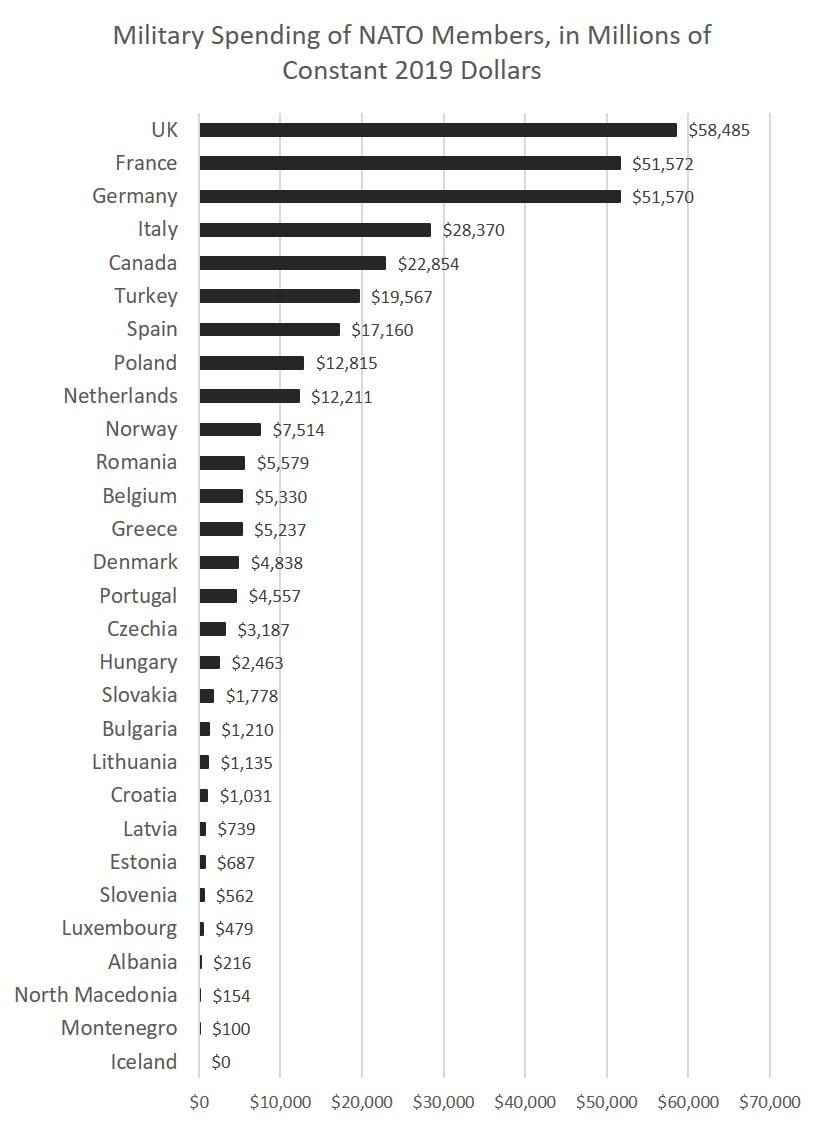Under any remotely sound money regime the aftermath of war and/or pandemic is highly likely to feature a sharp decline in the prices of goods and services on average. Even under unsound money regimes there are powerful forces operating towards lower prices once the war/pandemic recedes. Strong injections of monetary inflation, however, can overpower them. The Fed and all the foreign central banks which follow its lead and/or doctrines are apparently of the intention that this time the decline in prices will not take place. Instead, they state the aim of their monetary policies, to be achieved within two years, as a decline of the inflation rate from present near-term highs to 2 percent. In combatting the powerful “natural rhythm” of prices downwards in the
Topics:
Brendan Brown considers the following as important: 6b) Mises.org, Featured, newsletter
This could be interesting, too:
Nachrichten Ticker - www.finanzen.ch writes Die Performance der Kryptowährungen in KW 9: Das hat sich bei Bitcoin, Ether & Co. getan
Nachrichten Ticker - www.finanzen.ch writes Wer verbirgt sich hinter der Ethereum-Technologie?
Martin Hartmann writes Eine Analyse nach den Lehren von Milton Friedman
Marc Chandler writes March 2025 Monthly
 Under any remotely sound money regime the aftermath of war and/or pandemic is highly likely to feature a sharp decline in the prices of goods and services on average. Even under unsound money regimes there are powerful forces operating towards lower prices once the war/pandemic recedes. Strong injections of monetary inflation, however, can overpower them.
Under any remotely sound money regime the aftermath of war and/or pandemic is highly likely to feature a sharp decline in the prices of goods and services on average. Even under unsound money regimes there are powerful forces operating towards lower prices once the war/pandemic recedes. Strong injections of monetary inflation, however, can overpower them.
The Fed and all the foreign central banks which follow its lead and/or doctrines are apparently of the intention that this time the decline in prices will not take place. Instead, they state the aim of their monetary policies, to be achieved within two years, as a decline of the inflation rate from present near-term highs to 2 percent.
In combatting the powerful “natural rhythm” of prices downwards in the aftermath of pandemic and war we should expect the Fed and foreign central banks to marshal a tremendous amount of monetary power. That will occur beyond an intermission where central banks are ostensibly trying to rein back the monetary inflation which has reached its peak virulence in 2021–22.
Precise measurement of monetary inflation, including its stages, is impossible under the present monetary regime where the supply and demand conditions for monetary base—and the attributes of base money—have been deeply corrupted. In thinking about the next monetary inflation injections, history provides considerable insight.
The aftermaths of supply shocks are full of inflation danger, even though recession intervenes and mitigates this for some time. Monetary inflation has accompanied all the great supply shocks and sometimes preceded them as in the present case of pandemic and war. Here monetary inflation stretches all the way back to 2012/13.
In the aftermath of World War I and the Spanish flu pandemic (1918–19), US consumer prices fell by around 20 percent (from mid-1920 to end-1921). The fall in prices stemmed both from deliberate monetary deflation (starting in late 1919 as the Benjamin Strong–dominated Fed sought to reverse the monetary inflation in the half-year following the armistice) and the easing of supply restraints (with huge gluts developing for many primary commodities).
After World War II there was an almost 5 percent decline in CPI from mid-1948 to the end of 1949, overlapping the recession of November1948 to October 1949. There was no sudden substantial monetary policy tightening during that time. But the around 30 percent rise of consumer prices during 1946–47 coupled with the constancy in outstanding supply of high-powered money stock meant this shrunk far in real terms. Accordingly, the overhang of excess money supply dwindled.
Towards the end of the Korean War (1950–53) and into its aftermath consumer prices were relatively flat (mid-1952–55), having risen by almost 12 percent between mid-1950 and the end of 1951. That was despite the McChesney Martin Fed following an inflationary monetary policy as evident first in asset inflation and later in an eruption of consumer price inflation (the second half of the 1950s). In effect the “natural rhythm” downward of prices as wartime constraints eased and a sustained leap in productivity growth got under way meant that monetary inflation did not produce at first the symptom of consumer price inflation.
Toward understanding the potential strength of price reductions in these examples, we turn to the concept of “natural rhythm of prices,” already highlighted in the above summary. “Natural rhythm of prices” transcends and goes well beyond the familiar statistical distinction between overall CPI inflation and so-called core inflation (which strips out food and energy). It refers to persistent moves in an upward or downward direction of prices of goods and services which are not attributable to money supply veering persistently ahead of demand (monetary inflation) or below demand (monetary deflation).
Why “natural”? Because the direction of price change as measured in aggregate is in harmony with how real economic changes under way would influence the pricing decisions of individual firms (if indeed there were no offsetting monetary forces thwarting this).
For example, during an economic expansion when productivity growth is surging, firms in competitive sectors would tend to cut prices in line with falling costs as brought about by efficiency gains. Incomes would rise faster in real terms than in nominal terms. Correspondingly the path of demand for money would not shift substantially and remain broadly in line with slowly growing money supply. Hence, under a sound money regime, declining prices would be consistent with no monetary deflation or inflation.
Turn next to natural rhythm of prices in the context of the economic journey from pandemic and/or wartime shortages to resource abundance. The increased scarcity of supplies prompts many businesses to raise their prices. At the same time the shortage including dislocations goes along with a fall in real incomes. So, overall demand for money might not change significantly (unchanged pace of growth in nominal incomes made up of some decline in real terms and big price rises). If money supply is on unchanged low path, then the increase in prices does not signify monetary inflation. Correspondingly there would be no symptoms of asset inflation.
By the same token once peak scarcity has been reached and resources become more plentiful, real incomes rise, prices fall, and the demand for money would still be in line with very slowly growing supply. Falling prices would not indicate monetary malaise but natural rhythm.
In the actual context of the massive fiscal “stimulus” in the US during the pandemic, most households felt much better off even though for society as a whole it was a period of hardship. Real disposable incomes and real demand for money increased; money supply veered far ahead of money demand but not by as much as first appearances might suggest.
Even so we can say that the increase in underlying prosperity in aftermath of pandemic and/or war mean that the demand for money in real terms is likely to be increasing by more than normal. A fall in prices would be consistent with money demand rising in line with slowly growing money supply.
Instead, the central scenario is surely that the Fed has flooded the system with so much money (only some of the excess removed during the period of hawkish turn and taking account of cumulative price rises) that the natural downward rhythm of prices will not show up in outward reality. Rather, the Fed will use the relief from symptoms of inflation in the consumer price data to double down on monetary inflation. This would show up at first in a new episode of asset inflation. It will be boomtime for government collections of monetary repression tax (this corresponds to interest rates manipulated by the central bank at artificially low levels whilst CPI inflation remains low).
It is not too early for investors or the more general public to concern themselves about the next wave of monetary inflation. Many worry that the Fed may pull back from monetary tightening on the first signs of recession rather than completing the task of bringing inflation back down to 2 percent and keeping it there. That is likely to prove a false version of the problem.
More likely the Fed will keep tightening policy into the first stages of the next recession—that is just par for the course. Inflation may fall below the banner 2 percent. Then the Fed will unleash a powerful monetary stimulus rather than simply allowing money supply to continue growing at a slow pace with a powerful natural rhythm of prices downwards pulling the economy forward.
The monetary inflation of 2012–22 is dead! Long live the monetary inflation of 2023 onwards!
Tags: Featured,newsletter








